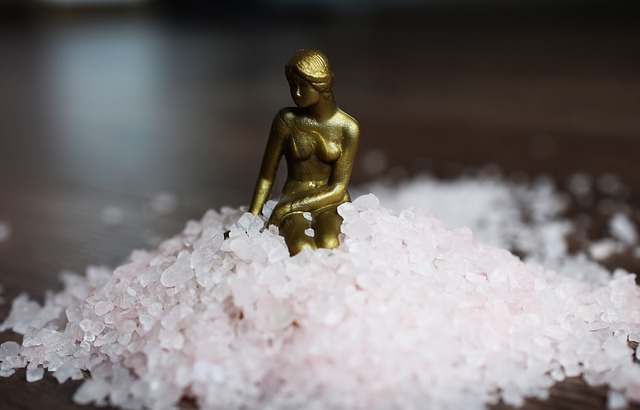No one can deny the charm that original fairytales and epics hold. To this day we read, study and marvel over texts that take us back to another time, another age.
Though these are the tales that fed our imaginations as we grew and have inspired countless adaptations through literature, the stage and on the screen, there is an undeniable problem with how many of our heroines have been voiced, or not-so-voiced.
The beauty of adaptations is that as our society evolves, so do they. From young-adult literature to fiction, genres that once reduced female characters to minor roles, or pushed aside altogether have re-emerged in updated forms. Here are four classic tales whose feminist protagonists have been, in recent years, reinvented for the better.
1. “Circe” by Madeline Miller
Madeline Miller has returned to enchant us with yet another re-telling of Homer’s epic
The Odyssey.” Her first novel, “The Song of Achilles,” debuted in 2011, re-inventing the story of the infamous Achilles and his companion Patroclus.
In it, the forces of hatred and love that intermingle in “The Iliad” make for a heartbreaking romance. However, in “Circe,” Miller does not focus on Odysseus, the protagonist of the original manuscript she is re-telling, but rather tells the story of the bewitching Circe.
Circe’s role in Homer’s epic is minuscule, as she only serves as a moment in which we can understand Odysseus’ shortcomings as a hero. With little backstory to manipulate, Miller expands Circe’s character by explaining revealing her heritage and the reasoning behind her exile to the island of Aeaea, and in doing so reclaims her womanhood and sexuality.
Rather than being seen as a woman who used her witchcraft and bed as a way of gaining a man’s trust, Miller allows Circe to remodel her character as a strong woman, capable of anything she strives for, and not only because a man has randomly appeared.
Gone is the image of a witch, lustful and cruel, and emerging in her place is a goddess unafraid to take her place on a pedestal. Something else that I found quite unique about Miller’s take was how she found a way to connect Circe and Penelope, Odysseus’ wife, without making them enemies.
I can always appreciate an author who finds the time to develop female characters’ relationships, rather than tossing them at one another because it’s easier to make them enemies. Madeline Miller is an insta-buy author for any mythology and classics lover, and I highly recommend welcoming her onto your shelves.
2. “The Cold Is in Her Bones” by Paternelle van Arsdale
Continuing on the trail of Greek personalities is Peternelle van Arsdale’s character Milla in “The Cold Is in Her Bones.” Although the book was only released last week, on Jan. 22, I flew through it. If ever you’ve come across the tale of Medusa, a frightening image of an angry woman with snakes for hair is often what comes to mind. However, there is much more to her tragic tale; wronged by divinity, Medusa was also portrayed as a protector, turning those into stones that would seek to harm others.
There is much variety, of course, and it depends on which source you rely on to tell the myth. Van Arsdale does not necessarily cast the role of Medusa to protagonist Milla, but rather uses Medusa as a tool to signify women who would be silenced by others.
One of the benefits of providing female characters with another opportunity to be heard is how these voices emerge. In Milla’s case, the tale is modified and retold as a coming-of-age story through the themes of forgiveness, tolerance and revenge.
Medusa, when really studied, has never been a simple character, and this world definitely does not lack complexity. Vengeance itself is personified in van Arsalde’s take, but not wholly treated as a villain that must be slain. Instead, the idea is treated with a humanity that I cannot help but wish that Perseus had afforded Medusa.
In this story, girls grow snakes in their hair, wild and tangled, and choose to fight with bravery, intelligence and healing.
3. “The Boneless Mercies” by April Genevieve Tucholke
Even if you haven’t read the Geatish tale of “Beowulf” for class, it is a title you’re sure to recognize. The epic poem has been translated a multitude of times, including one publication under the translation of J.R.R. Tolkien. And who could forget Angelina Jolie’s portrayal of Grendel’s mother in the 2007 film? Not exactly the frightening monster that I had in mind when reading the poem, but everyone’s an interpreter!
Although the piece is bursting with heroic ballads, grand kings and golden treasures, there is one great element missing: female roles. There are some women, of course, that appear here and there in the original piece, such as the king’s wife, some servants and a monster. But they simply exist to provide food, bear cups and host mead halls … and that’s about it. In all of the action, there is not much to say on female independence.
April Genevieve Tucholke revives the female characters by placing them in the midst of the action. Her band of women is called the Mercies; they are women who unapologetically set out to do the work of ritual killing, work that men do not care to do.
Based on “Beowulf,” the leading characters in this young-adult novel are fearless, unafraid to face any tasks or monster that may be placed before them. When allowed a chance to follow a beast and win a better life, these ladies are unapologetic about seizing their own chance at glory.
Tucholke’s writing is full of whimsy and lyric, captivating the reader’s attention with every sentence. Be prepared for a story resonating with grandiose action, lost divinities and creatures of a time long lost.
4. “The Surface Breaks: A Reimagining of The Little Mermaid” by Louise O’Neill
Hans Christian Andersen’s “The Little Mermaid” is a popular story to re-tell and modernize, romanticizing the idea of leaving home, experiencing new things and, of course, finding true love. Authors including Esther Dalseno, Sarah Henning and Elizabeth Fama have produced remarkable re-imaginings of Andersen’s characters, but one that has baited and hooked my heart is Louise O’Neill’s “Breaking the Surface: A Reimagining of The Little Mermaid.”
O’Neill dives into the depths of the sea and explores the world of Muirgen, our little mermaid. Hers is a world run by merfolk abiding by a tenacious patriarchal system. The Sea King is cruel and quick to sell his daughters to the highest bidder, the human prince is anything but charming and Muirgen’s sisters are so restricted that they often turn against one another.
The female characters, merfolk and human alike, do not have much say in how they conform in their society, in what their bodies look like or who they will marry. Any individuality is out of the question, and any misdoings of the husband are blamed on the wife.
This re-telling is extremely powerful because it details the harm that patriarchy causes to young women, pointing out the harmful idea of raising girls with a “perfect” body type and the idea of rejection being tied to anybody that falls out of that mold.
The Sea Witch is an example of what happens when women do not conform to society’s expectation. She is cast out, called a witch, an enemy and a bad influence. O’Neill is unapologetic in her re-telling and does not hold back from exposing the heartbreak and injustice that come with observing what happens when a fairytale is told from the perspective a woman who’s made to seem small and voiceless.
















